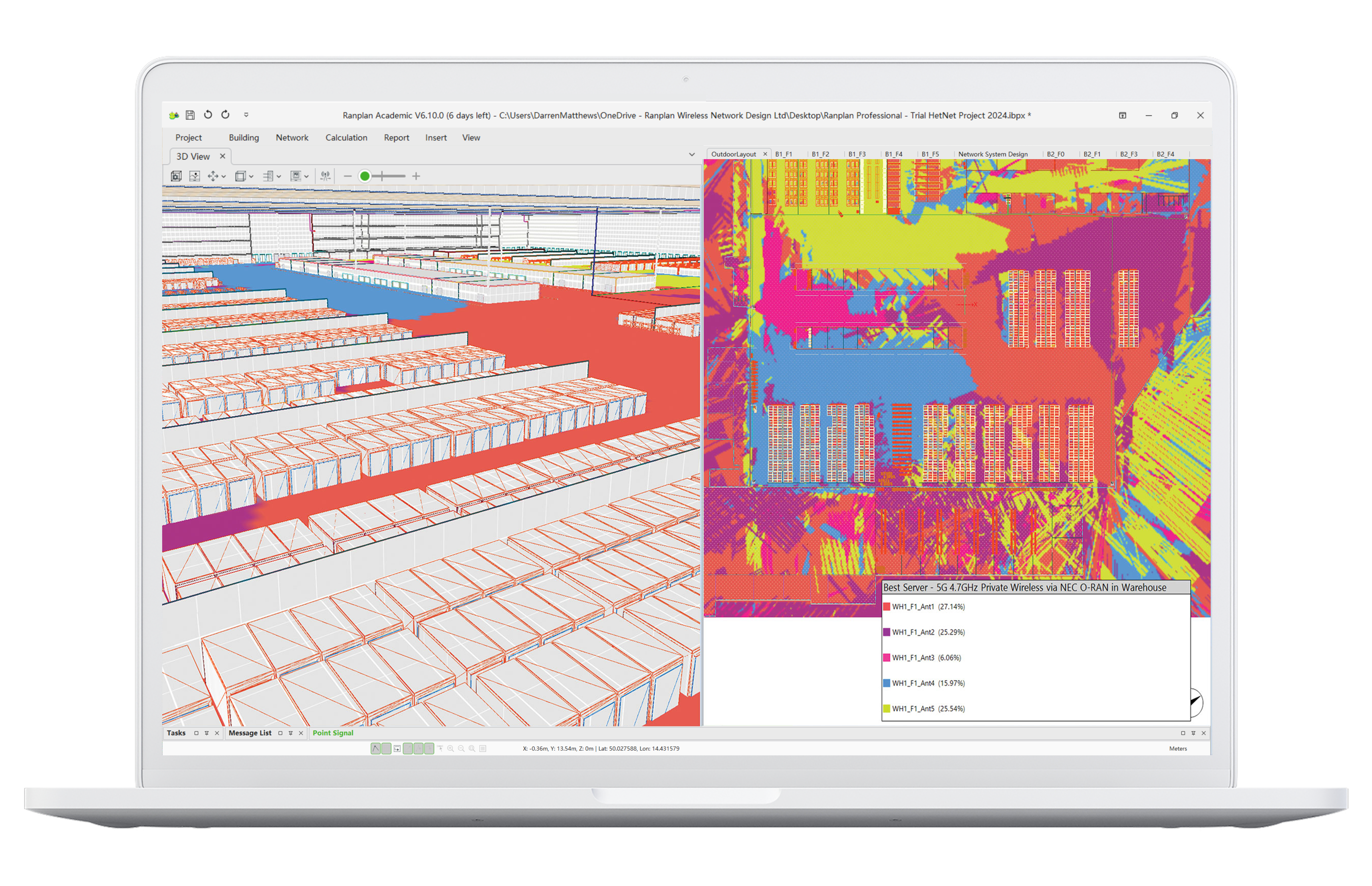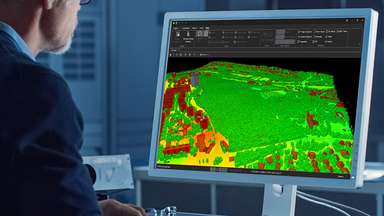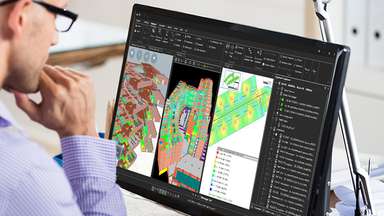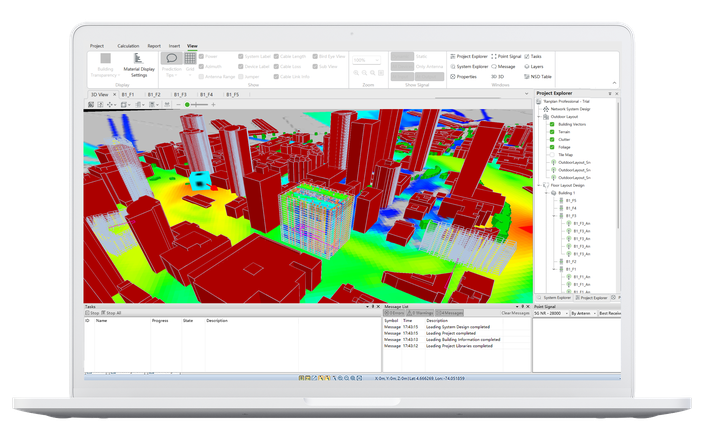What is the IoT?
The Internet of Things (IoT) is a dynamic network of physical objects or "things" that are embedded with sensors, software, and advanced technologies, allowing them to collect and exchange data with other devices and systems over the Internet. These objects can be everyday items such as appliances, vehicles, medical devices, industrial machines, and even clothing.




Unleash the Potential of IoT
IoT has transformed industries across the board, empowering companies to enhance operational efficiency, elevate customer service, make data-driven decisions, and unlock new value streams. With IoT, data seamlessly flows over networks without the need for human-to-human or human-to-computer interactions.

Enable mass connectivity for countless devices
Indoor and outdoor wireless networks facilitate the communication and data exchange between the vast number of interconnected devices and systems that make up the IoT ecosystem. Wireless networks play a crucial role in ensuring the scalability, reliability, and security of IoT applications, allowing for the seamless integration of IoT into various industries and everyday life.
How can Ranplan help you design an IoT Network?
Ranplan's network planning software optimizes wireless networks with remarkable capabilities that enhance mass connectivity and streamline operations. Standout features include:
- 3D Modelling: By incorporating 3D mesh objects, you can immerse yourself in a realistic environment with familiar elements. Assigning the appropriate materials to each object allows for accurate RF propagation analysis, ensuring the utmost precision in your network planning.
- Network Design: Use our collection of devices, components, and wiring to easily compare manufacturers and setups. This ensures your wireless network meets your performance needs and budget.
- Device support: Our network planning software supports multiple technologies including LoRA, SigFox, NB-IoT, and eMTC. Efficiently optimise your network design based on the requirements of your IoT devices, sensors and applications.

- Intelligent Automation: Our advanced automated modules are designed to simplify the process of network design. These modules utilize cutting-edge technology to automate various aspects of the design process, making it easier and more efficient for network engineers and designers.
- Signal Propagation Simulations: As the number of connected devices grows exponentially, evaluating network performance is vital for optimizing your IoT network. Our software uses advanced 3D simulations to understand network coverage and capacity.
- Customizable Reporting: Our software provides personalized reports that keep you updated on the status of project management, ultimately reducing costs and expediting the deployment of your IoT networks

Real-world benefits of IoT
The Internet of Things is reshaping the way we live and work. By incorporating various interworking technologies, it brings about widespread connectivity and a seamless flow of data across an endless array of devices. As we witness the exponential growth of IoT, it becomes clear that its potential knows no bounds. By embracing this transformative concept, we have the power to create a real world that is more interconnected, efficient, and intelligent, where devices communicate and collaborate effortlessly to enrich our lives.
Applications
Design tailored wireless in-building network solutions for diffrent indoor environments
-

Manufacturing
By utilizing machine-to-machine connected IoT devices, manufacturers can accurately map workloads and track wear and tear on equipment, allowing them to schedule preventive maintenance at the most optimal time. In addition, companies can enhance security measures by using employee badges or wearable devices embedded with RFID chips to manage and control physical access to their facilities.
-

Transportation
IoT sensors are enabling traffic management, real-time public transportation tracking, and fleet management for businesses. Furthermore, prominent automotive companies such as BMW Group, Ford Motor Company, General Motors, and Tesla are actively engaged in the development of self-driving vehicles, exemplifying the immense potential of IoT in the transportation industry.
-

Utilities
Utilities are leveraging the power of IoT to enhance the efficiency and resilience of their energy grids. By utilizing connected devices, they can establish two-way communication throughout the entire energy supply chain, from generation to distribution and usage. This enables utility companies to quickly identify and respond to blackouts, redirect distribution, and adapt to changes in energy demand and load.
-

Healthcare
IoT is transforming healthcare with remote patient monitoring, wearable devices, and smart medical equipment. These technologies help improve patient care, reduce hospital readmissions, and enable better management of chronic conditions. Healthcare providers are also employing IoT systems for efficient inventory management of pharmaceuticals and medical instruments.
-

Finance
Banks are utilising IoT for proactive maintenance of ATMs, real-time security monitoring, and queue management in branches. Not only are IoT devices facilitating payment methods, but mobile banking apps within IoT devices are providing location-based and biometric authentication which enhances transaction security and fraud detection. IoT is also aiding in asset tracking and secure cash transportation for the finance supply chain.
-

Retail
Retailers are harnessing the power of IoT systems to smarten their warehouses, incorporating automation and robotics capabilities. Moreover, they are leveraging IoT for enhanced inventory control and, more significantly, to elevate the in-store customer experience, providing a personalized and tailored shopping journey.
-

Agriculture
By harnessing the power of IoT, farmers can now rely on sensors to gather crucial data on rainfall, humidity, temperature, and soil composition. This valuable information enables them to automate farming techniques, optimize crop growth, and ensure efficient water and resource usage for successful yields.
-

Smart cities
IoT sensors and implementations, like intelligent streetlights and advanced metering systems, have the potential to alleviate traffic congestion, promote energy conservation, monitor and tackle environmental issues, and enhance sanitation practices.
-

Home automation
IoT-based home automation systems often incorporate the utilisation of intelligent devices, such as thermostats, light bulbs, and security cameras, which can be easily controlled and monitored through a centralized hub or application.
Recommended products
These are a few of the recommended Ranplan products for your project.
-

Ranplan Professional
The most powerful network design platform with intelligent algorithms to design, optimise and simulate your wireless networks.
Find out more -

Ranplan In-Building
An accurate and high-performance in-building network design tool to rapidly and cost-effectively plan indoor networks.
Find out more -

Ranplan Tablet
An easy to use onsite tool to produce in-building site surveys and run coverage performance predictions, speeding up designs.
Find out more
Discover how Ranplan Professional can help you plan and optimize mass connectivity across your wireless network. Find out more.
Find out more


